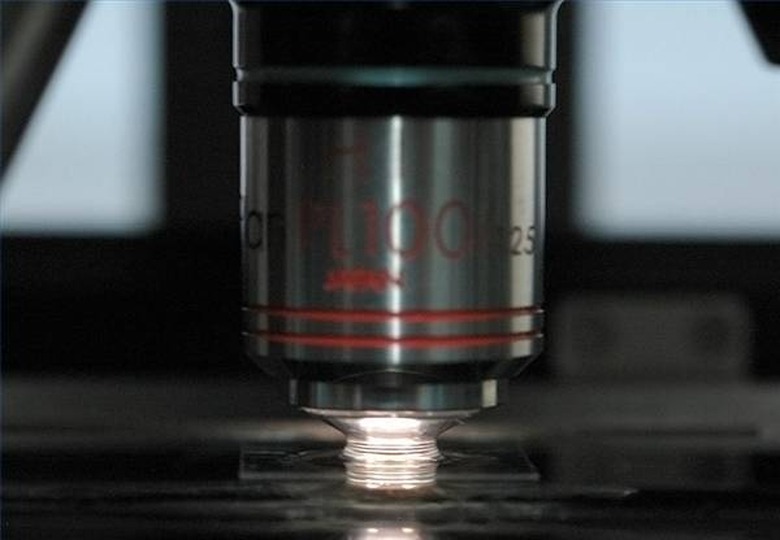Uses Of Microscopes In Science
The microscope is used in a variety of scientific fields for many different purposes. Whether it be in forensics or traditional medical science, the microscope is an indispensable instrument.
Tissue Analysis
Tissue Analysis
It is common for histologists to study cells and tissues using the microscope. For example, if a section of tissue is taken for analysis, histologists can use a microscope in combination with other tools to determine if the sample is cancerous.
Examining Forensic Evidence
Examining Forensic Evidence
Evidence collected at a crime scene may contain information that is not visible to the naked eye. For example, striations in bullets can be examined under a microscope to see if they match bullets shot from a particular gun.
Determining the Health of an Ecosystem
Determining the Health of an Ecosystem
It is common for field biologists to monitor the health of a particular ecosystem, such as a stream, by using microscopes to identify the number and diversity of organisms in a particular region over time.
Studying the Role of a Protein within a Cell
Studying the Role of a Protein within a Cell
Research scientists find microscopes an invaluable tool when they study the function of proteins within cells. With today's technology, many proteins can be labeled with a tag and studied in live cells.
Studying atomic structures
Studying atomic structures
Powerful microscopes such as atomic force microscopes have aided scientists in studying the surfaces of individual atoms.
Cite This Article
MLA
McDoogleburger, Amelia. "Uses Of Microscopes In Science" sciencing.com, https://www.sciencing.com/uses-of-microscopes-in-science-12194674/. 25 October 2017.
APA
McDoogleburger, Amelia. (2017, October 25). Uses Of Microscopes In Science. sciencing.com. Retrieved from https://www.sciencing.com/uses-of-microscopes-in-science-12194674/
Chicago
McDoogleburger, Amelia. Uses Of Microscopes In Science last modified August 30, 2022. https://www.sciencing.com/uses-of-microscopes-in-science-12194674/
